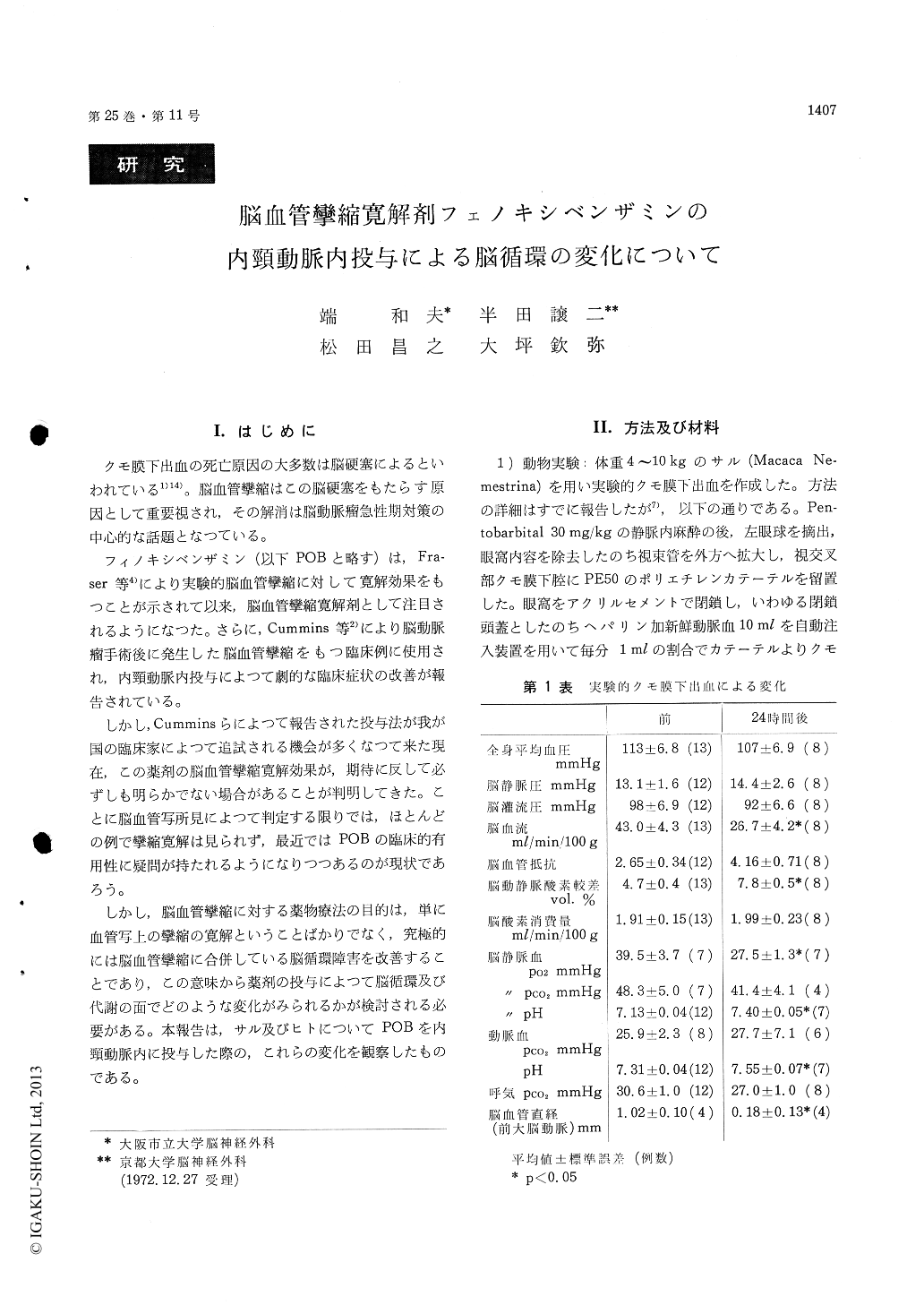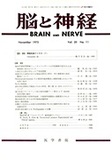Japanese
English
- 有料閲覧
- Abstract 文献概要
- 1ページ目 Look Inside
I.はじめに
クモ膜下出血の死亡原因の大多数は脳硬塞によるといわれている1)14)。脳血管攣縮はこの脳硬塞をもたらす原因として重要視され,その解消は脳動脈瘤急性期対策の中心的な話題となつている。
フィノキシベンザミン(以下POBと略す)は,Fra—ser等4)により実験的脳血管攣縮に対して寛解効果をもつことが示されて以来,脳血管攣縮寛解剤として注目されるようになつた。さらに,Cummins等2)により脳動脈瘤手術後に発生した脳血管攣縮をもつ臨床例に使用され,内頸動脈内投与によつて劇的な臨床症状の改善が報告されている。
Experiences are accumulating that the intra-carotid injection of phenoxybenzamine (POB) for the treatment of cerebral arterial spasm often fails to improve not only the clinical condition but also the angiographic finding of the patient having cerebral arterial spasm, although spasmolytic effect of this drug has been well documented in animal experiments.
In the first part of the present study the effect of intracarotid POB (1 mg/kg) was investigated using 7 baboons rendered experimental subarachnoid hemorrhage 24 to 48 hours prior to the injection. It was observed that mean arterial blood pressure was decreased reaching the level 20 mmHg below the original value at 10 min. after the injection of POB. Cerebral venous pressure remained un-changed and cerebral prefusion pressure decreased. CBF measured as a cerebral venous outflow withelectromagnetic flow meter was maintained un-changed, so that the calculated cerebral vascular resistance was decreased. When cerebral prefusion pressure was raised, CBF and cerebral oxygen consumption were observed to be increased.
In the second part of the study 12 patients with disturbances of cerebral circulation but without arterial spasm were studied. The intracarotid in-jection of 10 to 20 mg of POB resulted in a de-crease in mean arterial blood pressure with un-changed CBF measured by 133Xe clearance method. Cerebral vascular resistance was reduced. Arterial pO2, pCO2 and pH were unchanged. When the change observed on each hemispheres was com-pared, it was found that the decreased in cerebral vascular resistance was more marbed on the in-jected side.
It was discussed that a simultaneous raising of cerebral perfusion pressure would be required for POB to improve cerebral circulation.

Copyright © 1973, Igaku-Shoin Ltd. All rights reserved.


